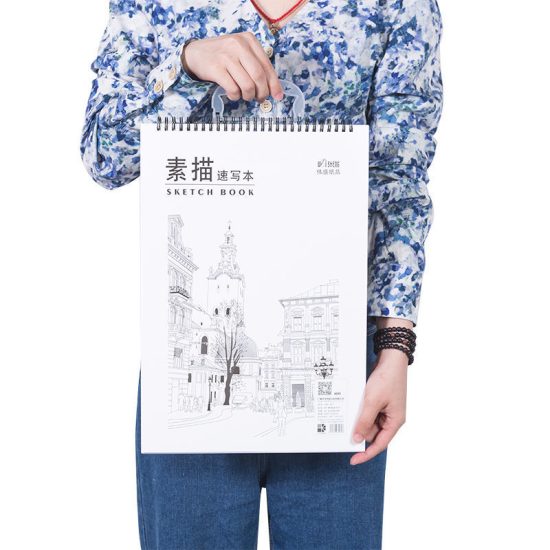Combining writing and drawing in a sketchbook journal can create a powerful and personal form of expression. Here are some tips for effectively combining writing and drawing in your sketchbook journal:
- Choose a journaling format: Decide on the format that works best for you. You can have separate pages for writing and drawing, or you can integrate both on the same page. Consider how you want to balance the space between written entries and visual elements.
- Select writing prompts or themes: Start with a writing prompt or theme for each journal entry. It could be a reflection on your day, a specific emotion, a meaningful experience, or a goal you want to focus on. Writing prompts can help guide your thoughts and inspire your drawings.
- Use words and visuals together: Combine your words and visuals to enhance your journal entries. Write down your thoughts, feelings, observations, or stories and accompany them with drawings, sketches, doodles, or even collages. Let the words and visuals complement and amplify each other.
- Experiment with layout and composition: Play with different layouts and compositions to create visually appealing journal pages. You can have a central drawing with written thoughts surrounding it, or you can create separate sections for writing and drawing. Consider the flow and balance of the page to create a harmonious composition.
- Illustrate your written entries: Bring your written words to life through illustrations. Create drawings or visual representations that capture the essence of your written thoughts. Use symbols, metaphors, or visual metaphors to enhance the meaning and impact of your words.
- Incorporate hand-lettering: Experiment with hand-lettering to add visual interest to your written entries. Practice different lettering styles and techniques to create unique headers, titles, or quotes. Hand-lettering can make your written words stand out and add a personal touch to your journal pages.
- Explore different drawing techniques: Use various drawing techniques to add depth and texture to your sketches. Experiment with shading, cross-hatching, stippling, or even mixed media techniques. The combination of different drawing styles and techniques can bring visual variety and richness to your sketchbook journal.
- Embrace imperfection: Remember that your sketchbook journal is a personal space for self-expression. Embrace imperfections and let go of the pressure for everything to be perfect. Allow yourself to experiment, make mistakes, and learn from them. Imperfections can add authenticity and character to your journal entries.
- Reflect and revisit: Take time to reflect on your journal entries and revisit them periodically. Use your sketchbook journal as a tool for self-reflection, personal growth, and creative exploration. Reflecting on past entries can provide insights, inspiration, and a sense of continuity in your journey.
- Be consistent and make it a habit: Establish a consistent journaling practice by making it a habit. Set aside dedicated time each day or week to work on your sketchbook journal. Consistency allows you to develop a rhythm and maintain momentum in your creative process.
Combining writing and drawing in a sketchbook journal provides a unique opportunity for self-expression and self-discovery. It allows you to integrate different forms of communication and explore the connections between words and visuals. Let your sketchbook journal be a personal sanctuary where you can freely express yourself and document your thoughts, experiences, and creative journey.


